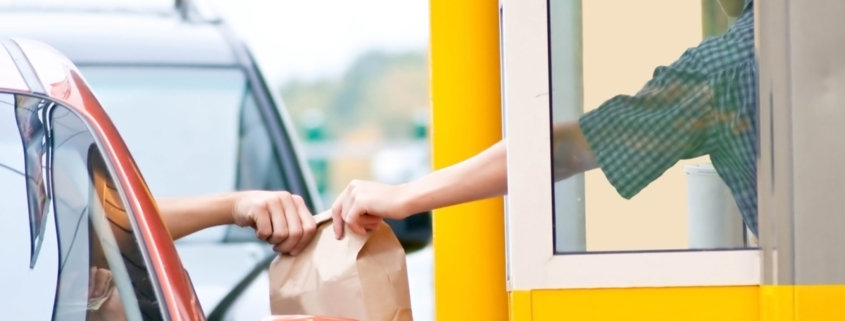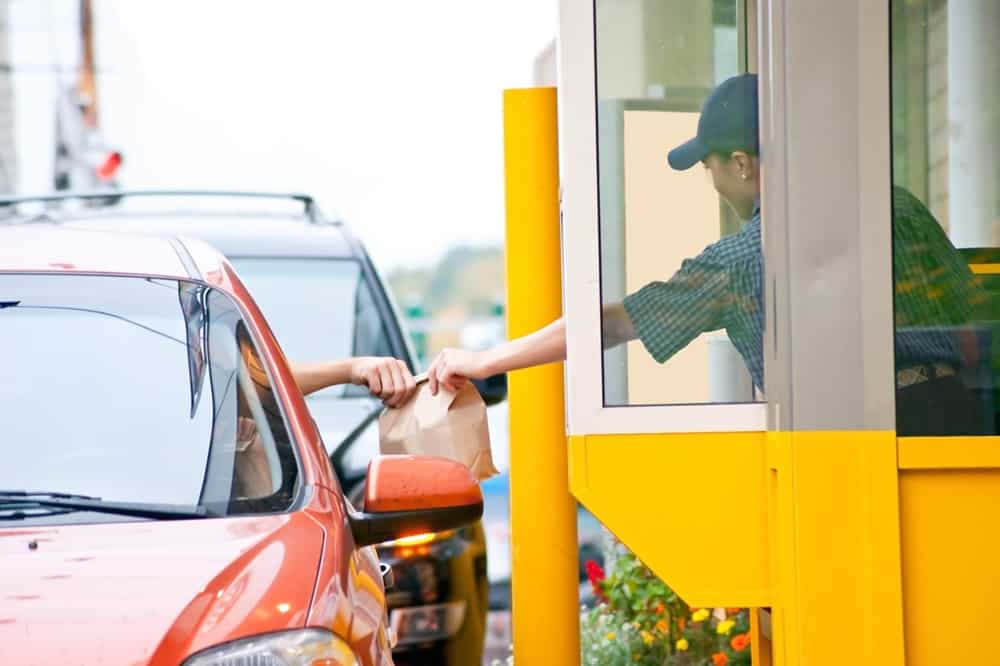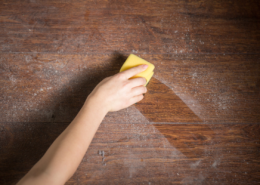Drive-Thru, Take-Out, Food Delivery—Is It Safe?
The news is constantly changing as experts learn more about the wicked virus that has invaded our world. Good, reliable information about food safety is absolutely crucial right now.
Restaurants have mostly moved into “to-go only” mode, closing their dining rooms but continuing to offer some combination of take-out, drive-thru, and home delivery. Can we rely on any of these options to keep us safe? Should we?
Yes, we can stay safe according to the FDA’s current position, provided we take precautionary measures. Just keep this in mind: Ordering prepared food is not quite as safe as preparing your own food at home. But it is definitely a safer option than eating in a restaurant dining room where the major risk is touching a table or another surface that has been touched by someone who is contagious.
Here are some things that experts are recommending we keep in mind when ordering food during this breakout:
Wash your hands
We’ve heard it a million times already, but it bears repeating because it is pretty much the second most important thing you can do. (What’s the first most important thing, which we’re just now learning? Do not touch your face!)
Wash your hands (or use hand sanitizer) both before and after you receive your delivery. And as always, wash your hands before you eat, even if you made the food yourself.
According to Stephen Morse, an epidemiologist at Columbia University in The Atlantic, there could be a small risk of contracting the virus from take-out containers and bags but that’s not your number one risk. What is our number one risk? Respiratory droplets we might receive directly from an infected person who happens to sneeze or cough in our presence.
Minimize human contact
Contactless delivery is the new term, and it is defined as receiving your food without coming face-to-face with someone else. Bear in mind that your delivery itself will have made contact with another person(s). However, contactless delivery reduces the risk of your face coming into direct contact with respiratory droplets from a contagious person. Contactless delivery is safer for you and for your delivery driver, too.
Discard all packaging
According to the CDC, “It may be possible that a person can get [the virus] by touching a surface or object that has the virus on it [via a respiratory droplet] and then touching their own mouth, nose, or possibly their eyes, but this is not thought to be the main way the virus spreads.”
Still, out of an abundance of caution, make it your standard practice to discard the packaging materials—paper or plastic bag, receipts, menus—that came into the house with the food. Researchers have found that the virus can survive on surfaces for a few hours to a few days, depending on the surface material. Then wash your hands. Again.
Disinfect surfaces
Using soap and water or an EPA-approved disinfectant like SNiPER or Clorox Wipes, clean your eating surface. And while you’re at it, clean the surface where you set the bags and boxes and any other things that have come in from the outside world.
Don’t eat with your hands
Even though you have just washed your hands prior to eating, using utensils can cut down even further on the possibility of contamination. Those little packets of sauce and condiment? Make certain to clean and disinfect them prior to opening. Or make it easier on yourselves and toss them in favor of your own items from the fridge.
Opt for cooked items
According to Stephen Morse in the source cited above, “cooked foods are unlikely to be a concern unless they get contaminated after cooking,” That’s why he suggests not ordering raw items from take-out. Make your own salad at home, following good hygiene practices for cleaning fresh fruits and vegetables.
Order extra, skip the drinks
If the food items can be easily reheated in a hot oven, order extra for tomorrow’s meal. This can help to cut down on delivery trips, which means you’re helping the restaurant. That makes it easier for you, too.
This is a good time to be drinking more water than we usually do, as immunity is heightened when we are well hydrated. Skip the sodas and other drinks in your take-out or delivery order. That makes it safer and easier for everyone involved.
No sharing, for now
It’s never wise to share drinks or eating utensils but we’ve all done that from time to time. And that needs to stop, for now. In general, according to Amy R. Sapkota, a professor of applied environmental health at the University of Maryland School of Public Health in Eater, if you want to split a shared takeout order, divide up the food onto separate plates before eating with your own utensils.
Support local business
Ordering take-out is not 100% foolproof (show me anything in life that is), but it is a way that we can support the businesses in our local communities, provided we are diligently following the best precautionary practices. These are tough times! And we want to come through as whole possible, with the restaurants and grocery stores we love to be whole, as well.
Businesses that have never offered home-delivery are gearing up to offer it. And that means delivery by people who’ve never delivered—who are willing to bring your food to you. Think of the risk they are willing to accept to keep themselves and that business going.
Tip more than you would normally if you can. Bear in mind contactless delivery for that person’s personal safety and peace of mind. Place the tip in an envelope, label it clearly then leave it where the driver will see it.
In every way we can, let our gratitude be known for all of the people in this country who are putting their own personal safety at risk to make our lives easier—all of our leaders, healthcare workers, law enforcement officers, truck drivers, and food delivery persons, too.
From the bottom of our hearts—Thank You!















 ©2014 Everyday Cheapskate
©2014 Everyday Cheapskate
This site definitely has all the information and facts I needed about this subject and didn’t know who to ask.
Hi Mary, I have a can of Lysol Disinfectant Spray, that I have used many times in my life.
It says Kills 99.9 % of viruses and bacteria. Nobody seems to be talking about it. I like to spray doorknobs, and toilet nobs with it. What do you think? Thank you, Love your column but still miss the old Debt Living magazines. I loved them. Anita Esser (((hug)))
I don’t feel fountain drinks are a good choice for the times we’re living. They already taste bad, and having people handle a container that has a open orifice? I don’t think so. If it’s not bottled I don’t want any part of it. Why isn’t anyone mentioning this anyway?
No… And Honestly it never was. That’s why for some years now, I cook myself @ home.
Agreed! Please DO keep these especially timely tips coming! We appreciate ALL of your research, as there is a wealth of advice ‘out there’ ….but we know YOU only share what you have validated. That is so helpful !! Cheers to safety for you, your family and EC team!
Stay safe, Mary. We NEED your comforting advice!!!